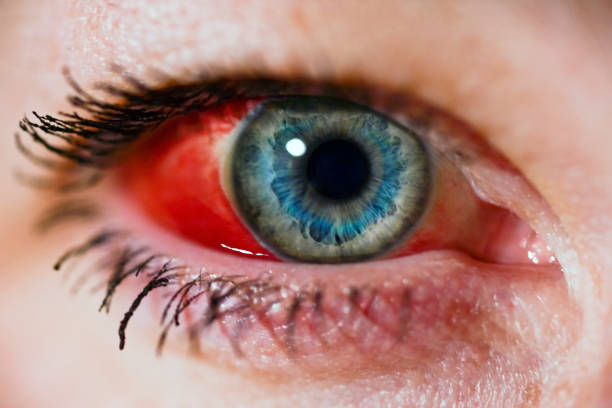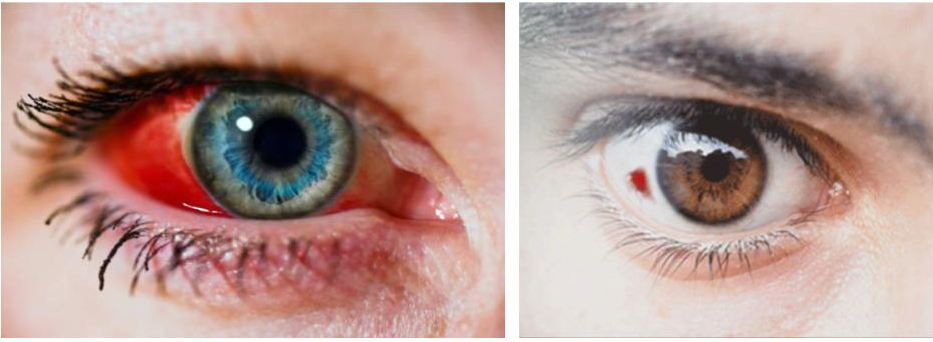SUBCONJUNCTIVAL HEMORRHAGE
A subconjunctival hemorrhage occurs when a tiny blood vessel breaks just underneath the clear surface of your eye (conjunctiva). In many ways, it’s just like having a bruise on your skin. The conjunctiva can’t absorb blood very quickly, so the blood gets trapped. You may not even realize you have a subconjunctival hemorrhage until you look in the mirror and notice that the white part of your eye is bright red.
It is a bleeding underneath the conjunctiva which can occur after a sudden or severe sneeze or cough, heavy lifting, straining, vomiting or even rubbing one’s eyes too roughly. It can also occur as a side effect of eye surgery or blood thinners.
Causes
The cause of a subconjunctival hemorrhage isn’t always known. The following actions may cause a small blood vessel to rupture in your eye:
- Violent coughing
- Powerful sneezing
- Straining
- Vomiting
In some cases, a subconjunctival hemorrhage may result from an eye injury, including:
- Roughly rubbing your eye
- Trauma, such as a foreign object injuring your eye.
Risk Factors
Risk factors for a subconjunctival hemorrhage include:
- Diabetes
- High blood pressure (hypertension)
- Certain blood-thinning medications, such as warfarin (Coumadin, Jantoven) and aspirin
- Blood-clotting disorders
Diagnosis
Your doctor or eye doctor will generally diagnose a subconjunctival hemorrhage by looking at your eye. You’ll likely need no other tests.
If you have recurrent subconjunctival hemorrhages, your doctor may also:
- Ask you questions about your general health and symptoms
- Conduct an eye examination
- Take your blood pressure
- Obtain a routine blood test to make sure you don’t have a potentially serious bleeding disorder.
Treatment
Depending on how severe it is, subconjunctival hemorrhage may take a few days or between 1 to 2 weeks to go away without any treatment. There is no way to speed up this process. To relieve any discomfort from swelling and to prevent additional bleeding, apply cold compress several times a day for the first day or two to stop the bleeding. After a couple of days, you can apply warm compress several times a day to help the eye in re-absorbing the blood and aid in the healing process. Eye Drops such as artificial tears may be used to soothe any scratchy feeling you may be experiencing.
Complications
Health complications from a subconjunctival hemorrhage are rare. A total subconjunctival hemorrhage may be a sign of a serious vascular disorder in older people. If your condition is due to trauma, your doctor may evaluate your eye to ensure you don’t have other eye complications or injury.
Prevention
If you need to rub your eye, do it gently. Rubbing too hard can cause minor trauma to your eyes, which may lead to a subconjunctival hemorrhage. Wear protective eye gear when you’re playing sports or doing activities that would increase your chances of getting an eye injury.




